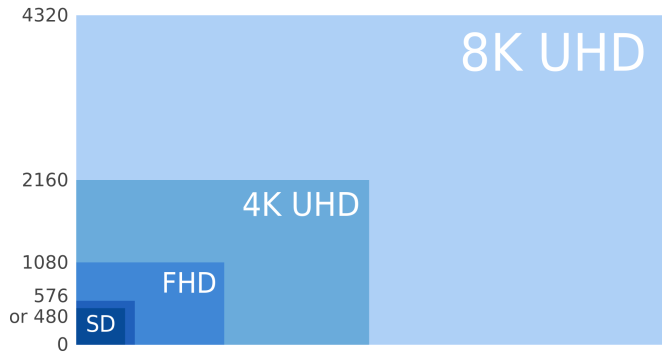As technology has evolved, so has the industry standard for things like the frame-rates we expect to see in different things like games and videos / films. The different frame-rates countries use are usually due to the frequency that their electricity uses. The UK is currently using a 50Hz frequency for their electricity, which results in our television programs running at 25fps. In the USA, their electricity is at 60Hz, which results in their television programs running at 29.97fps. Along with these relatively high frame rates, the resolutions of almost every video you see is increasing, with things like 4k (3840 × 2160) becoming increasingly popular. Below is a chart demonstrating different resolutions and their different sizes.

When uploading video to sharing websites like YouTube and Vimeo, it doesn’t matter what framerate you use, as long as it is 29.97 or above, YouTube automatically changes it to 30. This means that when editing and filming, if you have the intent of uploading it to YouTube it doesn’t really matter what the fps of the video is, as long as its above 29.97. When doing my project, because all of my gameplay is recorded at 60fps
Sources:
Wikipedia. (2016). Frame rate. [online] Available at: https://en.wikipedia.org/wiki/Frame_rate#Digital_video_and_television_standards [Accessed 23 May 2016].
Wikipedia. (2016). List of common resolutions. [online] Available at: https://en.wikipedia.org/wiki/List_of_common_resolutions#Digital_TV_standards [Accessed 23 May 2016].
Wikipedia. (2016). Ultra-high-definition television. [online] Available at: https://en.wikipedia.org/wiki/Ultra-high-definition_television#/media/File:8K_UHD,_4K_SHD,_FHD_and_SD.svg [Accessed 23 May 2016].